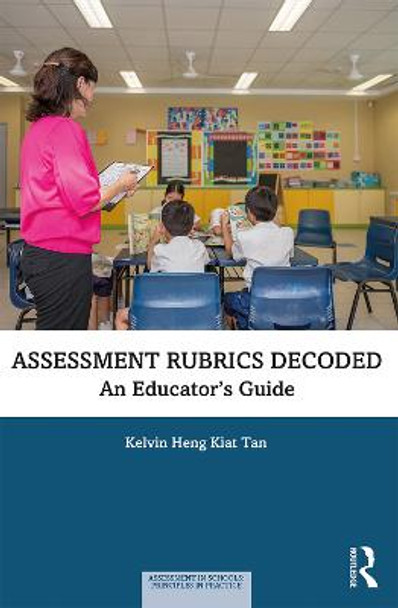Description
Rubrics offer concrete artefacts of what schools evaluate to be of merit, and what educators and schools value to be worth rewarding. Assessment Rubrics Decoded offers insights into a myriad of issues that affect, and are affected by, the construction of merit in students' learning and the articulation of (underlying) educational ideologies in the assessment of student achievement. Designed for both students and teachers - who should have parity of involvement in developing and using rubrics - this book covers the problematic issues of assessment in schools while offering readers practical solutions to navigating the ensuing tensions and dilemmas. The notion that rubrics may hinder assessment transparency is also discussed, with examples, to warn against uncritical use of rubrics that may discipline rather than help learners. The perspective of a school leader in providing assessment leadership to rubrics usage across a school is included for extending awareness of rubrics beyond classroom contexts. This provides an informed approach for teachers to understand the stakes and complexities involved in judging learning, and learners, whilst offering concrete options and suggestions to consider.
This book will be a valuable resource for classroom teachers, school leaders, teacher educators and researchers interested in the field of assessment rubrics.
About the Author
Kelvin Heng Kiat Tan is an associate professor in the Department of Learning Sciences and Assessment at the National Institute of Education, Nanyang Technological University, Singapore. He is one of the series editors for the Routledge book series Assessment in Schools: Principles in Practice.
Reviews
'This book presents a significant and thorough critical discussion of the widespread use of rubrics in educational assessment. The many advantages of rubrics as an assessment tool are accentuated, however, what impressed me more, was the profound critical reflection on the limitations and risks of using rubrics technically without the support of a comprehensive pedagogical perspective. This is a book parents, teachers, school leaders, and policy makers should be acquainted with.' - Kari Smith, Professor, Head of Norwegian Graduate School in Teacher Education (NAFOL), Department of Teacher Education, NTNU, Norway
'What you have in your hands is not the typical rubrics book. Kelvin Tan has done it again like he did in his 2012 "Student self-assessment: Assessment, learning and empowerment". In this rubrics book he helps the reader to reflect about what are rubrics, their boundaries and how to take our understanding one step further' - Ernesto Panadero, Researcher, Universidad Autonoma de Madrid, and Honorary Professor, Deakin University, Australia
'There is a general consensus in the field of education that rubrics work. This instructional tool is intended to articulate specific components and expectations for an assignment to students, enhance reliability of assessments, save instructors' time when marking, and help students to improve their self-assessment capabilities. However, as with most tools in education, questions of how rubrics work, for whom, and under what instructional circumstances need to be explicated. This volume will help you to get answers to these - and many additional -- questions. It is written in a very engaging manner with plentiful practical examples and personal anecdotes, and will be a great resource for future and current educators. If you want to understand the nature, purpose, potential applications, advantages, and caveats of rubrics, this book is for you.' - Anastasiya A. Lipnevich, Associate Professor of Educational Psychology and Director of Faculty Research Development, Queens College and the Graduate Center,The City University of New York
Book Information
ISBN 9780367076832
Author Kelvin Heng Kiat Tan
Format Paperback
Page Count 146
Imprint Routledge
Publisher Taylor & Francis Ltd
Weight(grams) 120g






